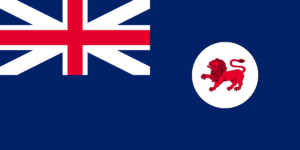Template:Country data Tasmania: Difference between revisions
From Zoophilia Wiki
Jump to navigationJump to search
No edit summary |
m 11 revisions imported |
||
| (5 intermediate revisions by 3 users not shown) | |||
| Line 6: | Line 6: | ||
| altlink = {{{altlink}}} | | altlink = {{{altlink}}} | ||
}} | }} | ||
Latest revision as of 01:54, 3 September 2020
Template:Country data Tasmania is an internal data container not intended to be transcluded directly. It is used indirectly by templates such as {{Flag}}, {{Flagicon}} and others.

Standard parameters
| Parameter name | Value | Meaning |
|---|---|---|
alias |
Tasmania |
Main article name (Tasmania) |
flag alias |
Flag of Tasmania.svg |
Image name (File:Flag of Tasmania.svg, shown on right) |
Example usage
{{Flag|Tasmania}}→ Tasmania
Tasmania{{Flagicon|Tasmania}}→
TemplateData
This is the TemplateData for this template, used by TemplateWizard, VisualEditor and other tools.
TemplateData for Country data Tasmania
TemplateData for Country data Tasmania
This template should not be used directly. It is used indirectly by flag templates such as Template:Flag and Template:Flagicon. See Category:Flag template system for a full list of flag templates and Wikipedia:WikiProject Flag Template for further documentation.
| Parameter | Description | Type | Status | |||
|---|---|---|---|---|---|---|
| No parameters specified | ||||||